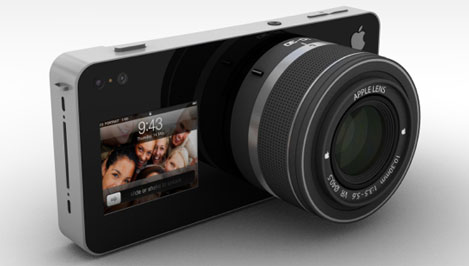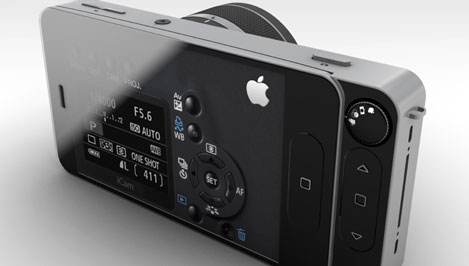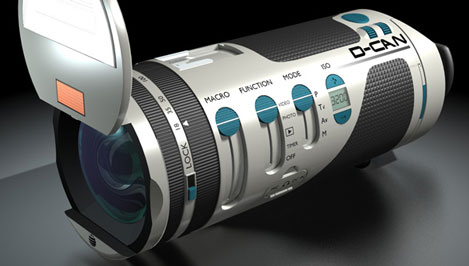Lest we forget: Apple invented desktop and reinvented mobile computing. Apple revolutionized the access to and enjoyment of music. And the phone.

+++ Update Aug 2012: Actually, they considered making a camera or a car, as Apple’s Phil Schiller revealed…
Imagine they get their hands on the camera. They will. And that can possibly revolutionized the camera per se. And photography. The way we take and use pictures.
But then again, Steve Job, the creative genius who correctly anticipated what we’d buy long before we understood what we want to buy, Steve Jobs is gone, and with him his visionary genius.
But Steve Jobs already changed photography. With the iPhone.
He created one of the most popular cameras of all time by the removing the technical barriers between person and image.
He didn’t just create a convenient camera that led to the development of innovative applications, he created an easy, user-friendly way for anyone to house and share their memories. Anytime, anywhere, for anyone.
But Steve Jobs wouldn’t be Steve Jobs without again thinking ahead.
He was actually contemplating a reinvention of photography. His biographer Walter Isaacson told the New York Times:
He had three things that he wanted to reinvent: the television, textbooks and photography. He really wanted to take these on. I didn’t go into details about these products in the book because it was implicitly Apple’s creations and it’s not fair to the company to reveal these details.
The book Inside Apple furthermore reveals Jobs had made it known before his death he was interested in meeting with Lytro CEO Ren Ng about the possibilities of light-field capture technology, the so-called plenoptic camera, in iPhones.
Lytro’s CEO Ren Ng, a brilliant PhD computer scientist from Stanford, was as excited as Steve Jobs. They met, they talked, they made plans.
Light field capture combined with apps would only be a small part of reinventing the camera.
You talk minimalist design, prime materials, top-notch functionality and integration.
I doubt it would look as iphoneish and non-groundbreaking as this one, but voilà, here we have the iCam, a concept camera design by Italian Antonio DeRosa:

Basically, it provides a slim case to snap the iPhone into to gain access to an interchangeable lens system. Add a front-facing small display for self-portrait shots and a built-in pico projector to show off slideshows. Plus hardware controls and a preset wheel like on most digital cameras these days. And the beautiful aluminum finishing.

But a concept is a concept and not a dream come true. Whatever Apple can monetize on a grand scale = Cupertino will monetize.
The iCam concept doesn’t go far enough.
Think from scratch. Add the wow-factor and dead easy usability. A gadget stripped down to the bare essentials.
Think different.
It’ll be the closest thing to seeing with your own eyes.
Point is this: traditional camera shapes are an anachronism.
They’re a thing of the past.
Says designer Jean-Michel Bonnemoy.
Traditional camera form factors were dictated by the need to hold a roll of film in the back. Now that we’re all digital, why are still maintaining that archaism?
Bonnemoy maintains the new form factor should be a cylinder – ergonomically better for the hand.
His functionalist D-CAN concept significantly reduces volume while still providing all the finite controls professional photographers are used to:

Bonnemoy even includes an electric flash in a lens cap that’s impossible to lose.
But ideal ergonomics? Call me old fashioned. Shooting a D-CAN reminds of blowing a trumpet.
What again differentiates Apple’s products from the rest of the crowd?
They got the latest under the hood, but look simple, plain even, making things and life easier.
They’re an extension of body and mind.
Reduction, minimalism are key to Apple’s success.
Now when do camera makers give us cameras photographers are actually longing for.


